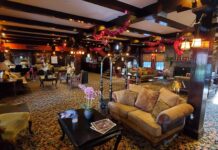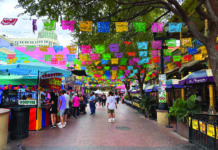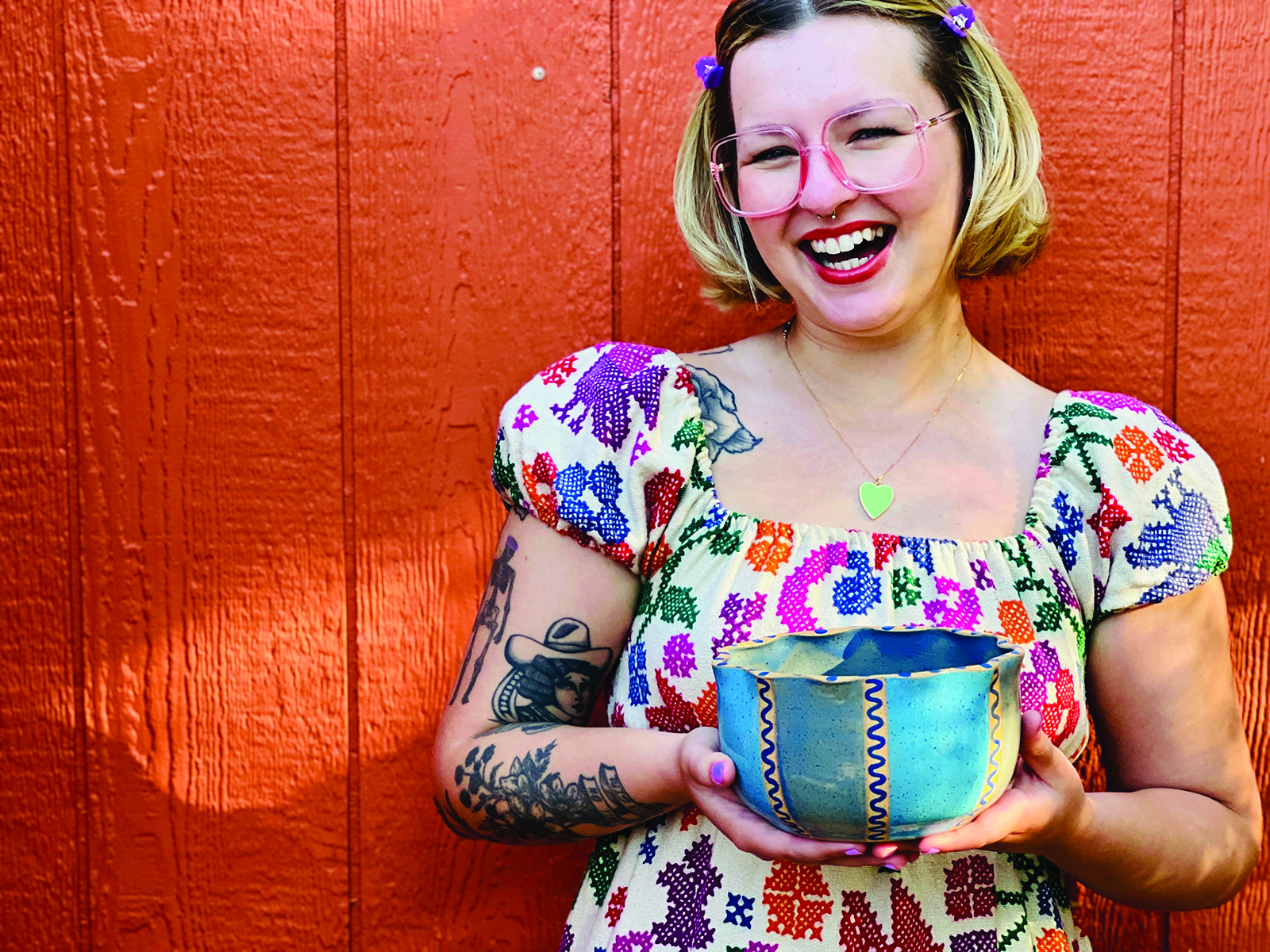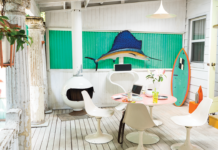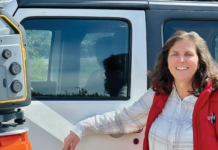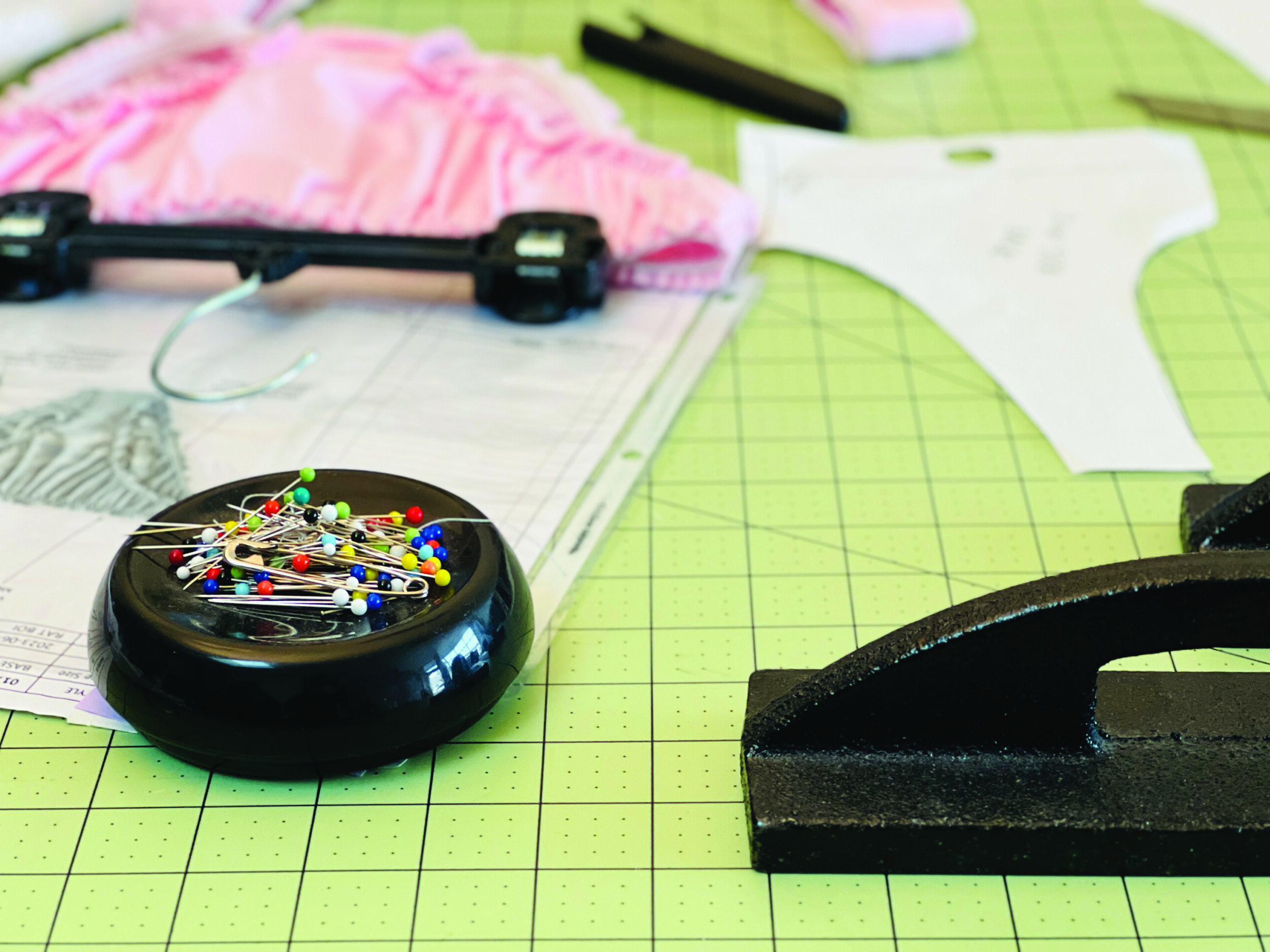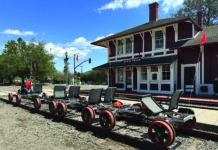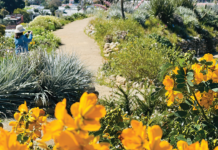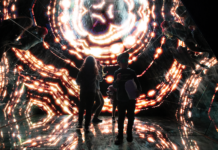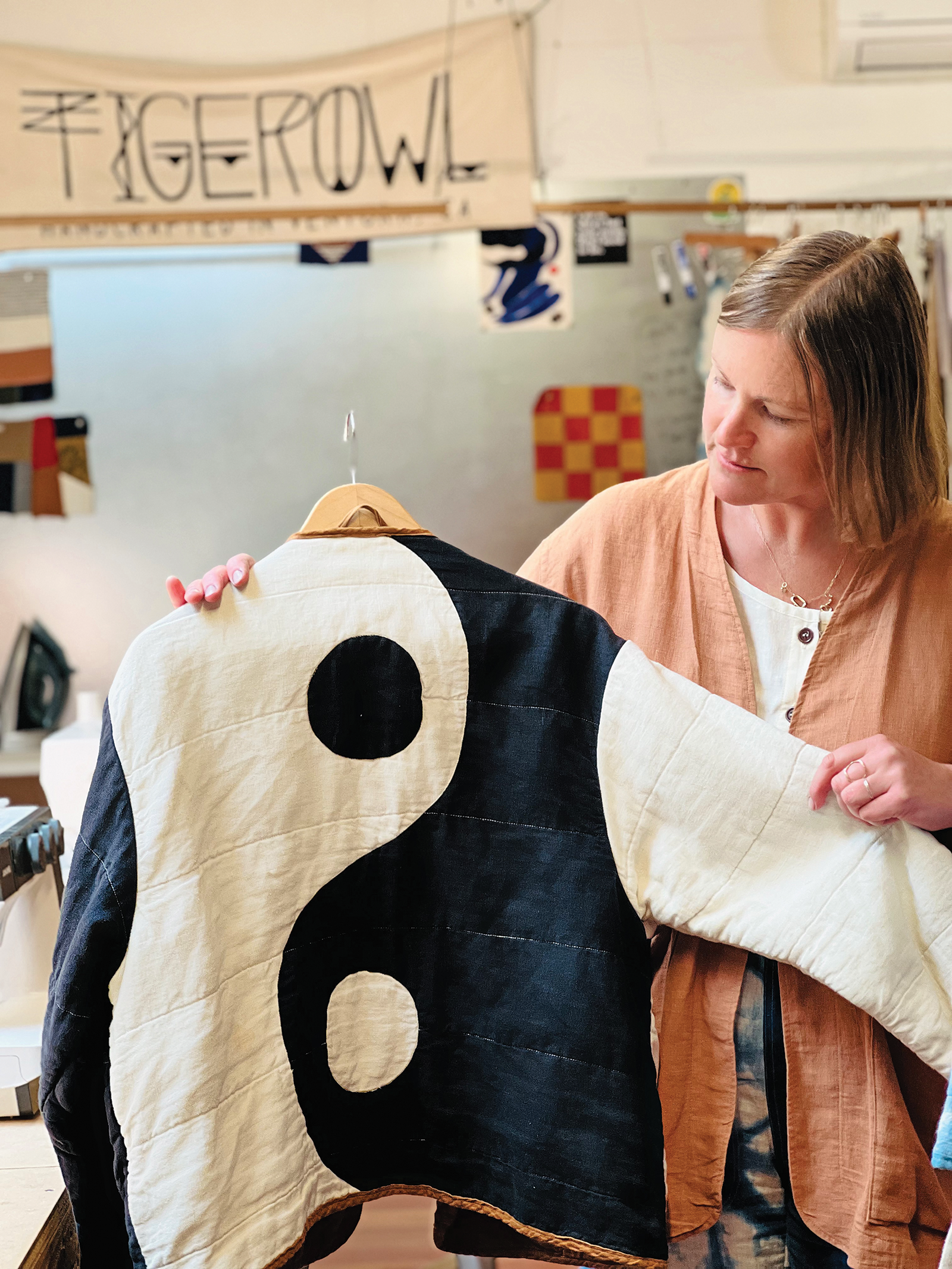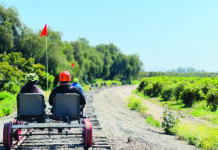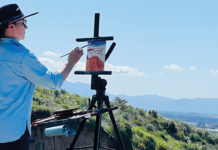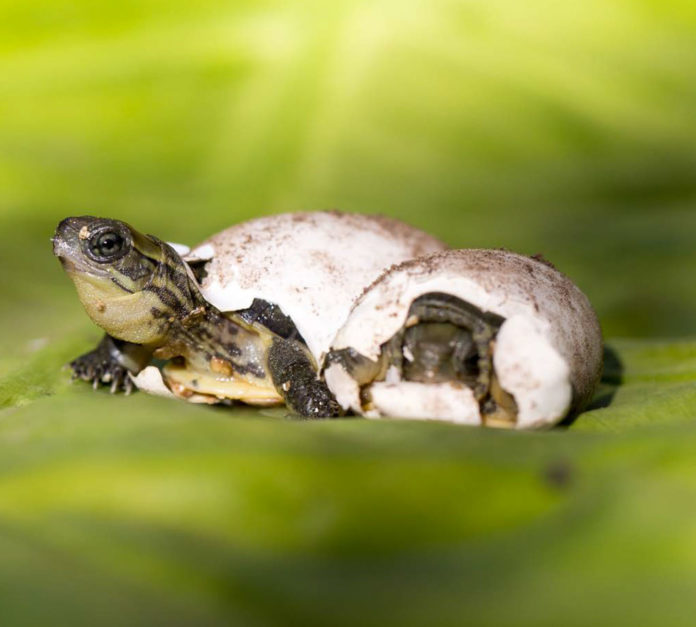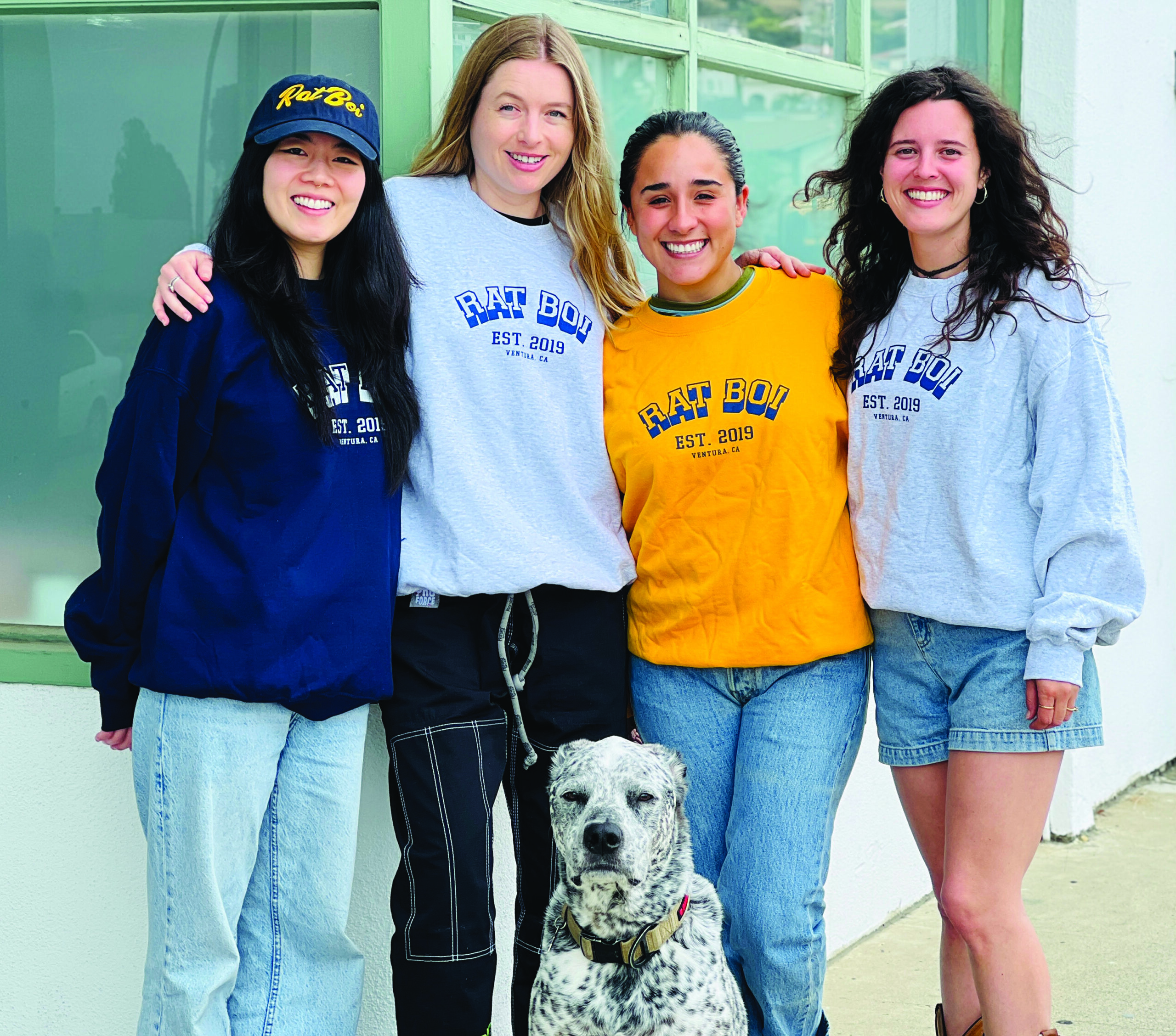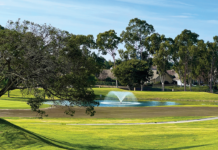The Turtle Conservancy works at home and abroad to save turtles and tortoises from extinction.
By Nancy D. Lackey Shaffer
On Ojai’s East End is a little oasis of beauty and serenity, some 10 acres filled with oaks and a few orange trees, beautifully landscaped with succulents, charming greenhouses and a few patches of grass — hidden from the casual observer by picturesque Spanish-style walls and gates. It’s the kind of place that would make most humans visitors sigh in contentment. For the majority of the residents, it is salvation.
This small piece of paradise is the Conservation Center of the Turtle Conservancy, home to several hundred turtles and tortoises, almost all of which are critically endangered.
According to the International Union for Conservation of Nature’s Red List (considered by many to be the most comprehensive inventory of conservation status), more than half of all Testudines (the taxonomic order that contains turtle and tortoise species; chelonian is another commonly used term) worldwide are threatened with extinction. From the cloud forests of Southeast Asia to the woodlands of Madagascar to South Africa’s South-Western Cape and the Chihuahuan Desert of Mexico (and beyond), these creatures face tremendous population pressure. Poaching (for traditional Chinese medicine, cuisine and the illegal pet trade),
habitat loss and climate change have depleted chelonian numbers
across the planet.
Conserving these species is the main mission of the Turtle Conservancy.
A Transcontinental Journey
Its story begins on the East Coast.
Founder Eric Goode is a California native who moved to New York in the 1970s. “He made his fortune in hotels and clubs in New York City,” explains Maximilian Maurer, public outreach and membership director. “He spends all his money on turtles and turtle conservation.”
Despite a glamorous background, Goode is a reptile enthusiast at heart. He cultivated friendships with zoologists and other researchers, including John Behler, curator of herpetology at the Bronx Zoo, run by the Wildlife Conservation Society (WCS). In 1979, Behler helped establish a herd of radiated tortoises from Madagascar at the Wildlife Survival Center on St. Catherines Island, a barrier island off the coast of Georgia. Other species eventually followed, including the angonoka or ploughshare tortoise and several species from Southeast Asia. (Maurer, who joined the conservancy in 2010, grew up on nearby St. Simons Island, and remembers seeing these same individuals when he was a child.)
When WCS discontinued the island program in 2004, the tortoise population — around 200 individuals — needed a new home.
Goode found one for them on two acres in Ojai, selected for its Mediterranean climate favorable to many of the species. The grounds were carefully (and beautifully) landscaped and state-of-the-art greenhouses, tortoise houses, a nursery, quarantine area and other structures were built to make an environment suitable for several different chelonian species. The campus expanded in 2011, when it acquired some adjacent property.
Today, the center is home to several hundred individuals representing over 30 species of turtles and tortoises, including leaf turtles, box turtles, Burmese star and mountain tortoises, wood turtles and even giant tortoises (from both the Galapagos and the Seychelles). Several individuals have been rescued from the illegal pet trade. Others come from zoos, research facilities and similar institutions (the conservancy is certified by the Association of Zoos and Aquariums). Many were hatched right here.
Research Resort
Under the watchful eye of their keepers, the center’s turtles are thriving, with space to graze, climate-controlled environments, pristine water, appropriate and abundant food, freedom from poachers and soup pots. Every effort has been made to mimic the natural environment for every species. As a result, the center offers an unparalleled opportunity to research these animals, some of which are exceedingly rare, incredibly cryptic and live in hard-to-reach areas in the wild.
“One important thing this place allows us to do is observe and learn a lot about them,” Maurer confirms.
It’s not just conservancy staff taking advantage of this opportunity. The Ojai campus hosts researchers, students and even artists and photographers interested in studying these creatures.
One species creating some excitement is the impressed tortoise, native to cloud forests in Southeast Asia. Living at high elevations (6,500 ft., according to Maurer), this mushroom specialist is particularly at risk from climate change.
“If it gets much warmer in their habitat, they can’t go further up,” Maurer explains. “They could go extinct.”
Difficult to study in situ (due to its narrow range and a light-brown, leaf-shaped shell that makes it nearly impossible to spot in the wild) and hard to maintain in captivity, the Conservation Center’s success at keeping its impressed tortoise population alive and breeding is a testament to the excellence of its care.
Another source of great interest are the Vietnamese leaf turtles rescued from an illegal pet trade confiscation two years ago. After being nursed back to health, two of them successfully mated.
“She laid her first egg,” Maurer says of the female. “It’s very exciting!” It also provides crucial information: “Breeding and the production of eggs are really the only ways to know if they’re healthy.”
In situ conservation
In fact, many of the species kept at the Turtle Conservancy’s Conservation Center breed successfully. Some of the hatchlings remain, while others go to zoos or similar conservation and research facilities (as a gift, a loan or part of an exchange). Hatchlings of one very special species meet another fate altogether.
The golden coin turtle (also known as the Chinese three-striped box turtle) of Asia once ranged from South China to Vietnam. Prized in traditional Chinese medicine, it was hunted nearly to extinction. Conservationists in Hong Kong are trying to save the species by reintroducing captive-bred individuals into remnant populations, to boost numbers and increase genetic diversity. Since 2013, the Turtle Conservancy has been working closely with Kadoorie Farm and Botanic Garden to send Ojai-hatched golden coin turtles back into the wild.
The relationship with Kadoorie Farm is just one example of the Turtle Conservancy’s efforts to protect turtles worldwide.
“Most of the Turtle Conservancy’s work is what you’re not seeing,” Maurer says, explaining that its efforts go far beyond the Ojai Valley. “We’re actually buying critical turtle and tortoise habitat to put into a network of preserves. That’s probably our best work. . . . As we progressed, we realized that conservation is not breeding in captivity, but protecting critical habitat.”
According to Maurer, most of the money raised by the conservancy goes toward purchasing land to keep it healthy for turtles. Currently, the conservancy and its partner organizations (which include Rainforest Trust and Global Wildlife Conservation, among others) have purchased over 65,000 acres for preservation, supporting its “in situ” conservation program — conservation efforts that take place in the species’ actual habitat.
Around 1,000 acres are in the Fynbos ecosystem, a sliver of rich biodiversity on the southern tip of South Africa, known for its striking flowers. It’s also home to around 90 percent of the remaining population of the
geometric tortoise.
“It’s saving a species,” Maurer says. “That’s a lot of responsibility.”
Similar programs are being implemented in Mexico, Madagascar and the Philippines. The Turtle Conservancy is also working with the Terrapin Nesting Project in Long Beach Island, New Jersey, to restore the population of Northern diamondback terrapins.
Protecting habitat isn’t just good for the turtles: Numerous other plant and animal species endemic to these regions benefit from conservation efforts, including the military macaw and beaded lizard in Mexico; the Cape sugarbird, cobra and grysbok of the Fynbos; and Palawan pangolins in the Philippines. Where turtles thrive, everything else usually does, too — hence, one of the conservancy’s mottos: Save Turtles. Save the Planet.
Ambassadors of an ancient world
The Conservation Center is much more than its lovely East End gardens and phenomenal collection of chelonians. But as a showcase to draw attention to the Turtle Conservancy’s cause, it’s hard to beat.
It’s not open to the public, but tours are available to members, and students at nearby Thacher School have the opportunity to take some of their biology classes here. Seeing these ancient reptiles — older than both snakes and crocodiles, and dating back to the Jurassic — up close and personal is a stunning experience.
The great ambassadors of the center are its giant tortoises. Natives of the Galapagos and Seychelles islands, they know no natural predators, and thus display almost no fear in the presence of . . . well, anything. But some do like to be groomed (an activity undertaken by finches in the wild), and a few at the Turtle Conservancy will approach humans, reaching out surprisingly long necks and
rising tall on their legs to be rubbed.
Touching the dry, wrinkled, leathery skin of these creatures is one way of making direct contact with the natural world, one far older than human existence, primitive and a little alien. It’s a reminder not only of the wonders that share the planet with us, but of endurance . . . and, paradoxically,
fragility. That which has survived for millennia now faces extinction in just these last few centuries — due almost exclusively to the actions of humans. It will be up to us to prevent their permanent loss.




